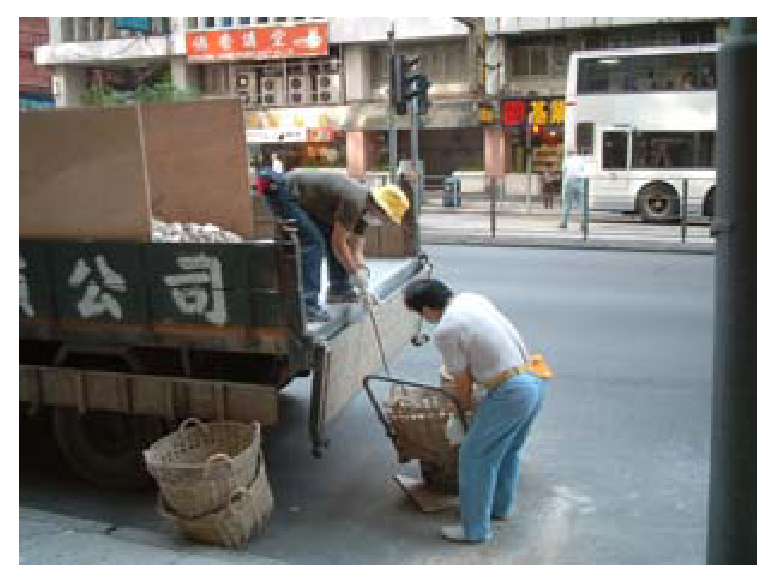Lifting techniques
Further to information given in the first IMCA pocket safety card Manual handling: Watch your back), a member has submitted the following notes which members may find useful:

“The phrase ‘a picture is worth a thousand words’ applies to this scene, which I came across recently in Hong Kong.
The evident hyperextension of the back and the strain involved in yanking up the load by this method are a good example of what not to do when handling items without the use of machinery.
The following points provide guidance and a reminder of the proper care to be taken when a task requires a manual lift of one description or another.
- Grip – A good grip makes maximum use of the palm of the hand, the ball of the thumb and the base of the fingers. Considerable damage can be caused by using the sensitive fingertips and continued use of them leads to strain ed fingers or strained forearm muscles;
- Back – The back should be kept straight to maintain it in its natural and strongest position. This necessitates bending at the knees and ankles to get down close to the load and then to raise it, pushing upwards with the leg muscles to regain the vertical position;
- Chin – The chin should be kept well in so that it is fairly near the chest, because this helps to keep the spine in its natural upright shape;
- Feet – The proper position of the feet is approximately the width of the hips apart and with one foot slightly in front of the other. This position provides a reasonably stable base as the load is lifted (lifting a load with the feet together creates a top-heavy, unbalanced situation) and, once the load is off the ground, affords the immediate facility of transferring the weight forward to the front foot so that the load can be carried away in the required direction;
- Arms – Arms should be kept as close to the body as possible so that the body itself does not become unbalanced by its own members;
- Body – The body, being kept in its normal position, should act as a counterweight to the load.
Safety Event
Published: 1 January 2005
Download: IMCA SF 01/05
IMCA Safety Flashes
Submit a Report
IMCA Safety Flashes summarise key safety matters and incidents, allowing lessons to be more easily learnt for the benefit of all. The effectiveness of the IMCA Safety Flash system depends on Members sharing information and so avoiding repeat incidents. Please consider adding [email protected] to your internal distribution list for safety alerts or manually submitting information on incidents you consider may be relevant. All information is anonymised or sanitised, as appropriate.
IMCA’s store terms and conditions (https://www.imca-int.com/legal-notices/terms/) apply to all downloads from IMCA’s website, including this document.
IMCA makes every effort to ensure the accuracy and reliability of the data contained in the documents it publishes, but IMCA shall not be liable for any guidance and/or recommendation and/or statement herein contained. The information contained in this document does not fulfil or replace any individual’s or Member's legal, regulatory or other duties or obligations in respect of their operations. Individuals and Members remain solely responsible for the safe, lawful and proper conduct of their operations.
